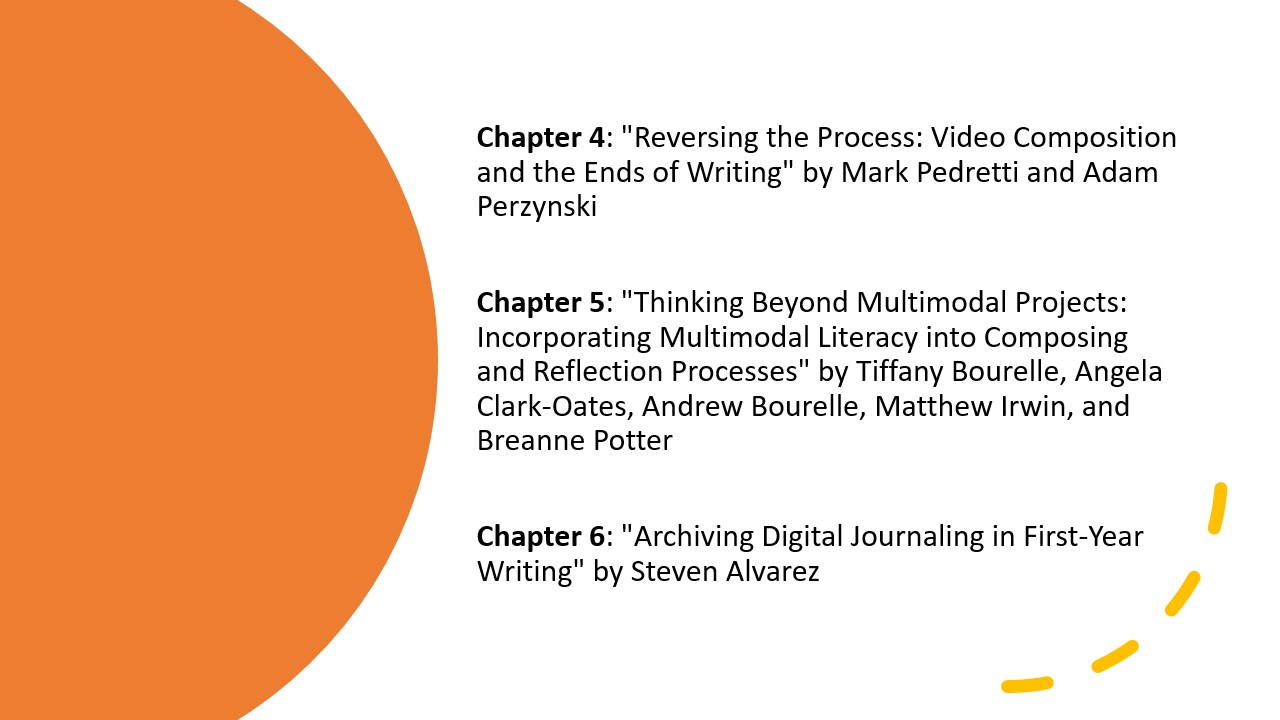Section II: Composing Across Media
The chapters that comprise the second section of Bridging the Multimodal Gap: From Theory to Practice discuss iterations of composing across different media forms. Each work amplifies the necessity for students and educators to be actively attentive in, and to, each step of the multimodal composing process.

In Chapter 4, "Reversing the Process: Video Composition and the Ends of Writing," Mark Pedretti and Adam Perzynski asked readers to rethink Donald Murray's process model through the act of video composing. The authors drew readers' attention to "process pedagogy's elusive context of ending" (p. 70). Aristotle's principle of entelechy acts as a guiding framework which prompts readers to disrupt the traditional dichotomy of process versus product and think about "product within process" (p. 71). To do so, they described a classroom experience in which they administered reflective surveys to students about the connections and disparities between alphabetic and video composing after having the students compose in both media. The authors found that video composing required a more attuned awareness about the end—that is, the product—throughout the various stages of the composition process. Optimistically, Pedretti and Perzynski hope that the content outlined in their chapter transcends media and is applicable to alphabetic composition as well.
Tiffany Bourelle et al. also suggested a heightened sense of awareness from the onset of the composing process in Chapter 5, "Thinking beyond Multimodal Projects: Incorporating Multimodal Literacy into Composing and Reflection Processes." The authors advocated for the inclusion of multimodal strategies at all levels in hopes of deferring attention from the end product and more toward the writing process. In this chapter, Bourelle et al. provided strategies, such as video storytelling, photo essays, and crowdsourcing, for educators to include in the composing and reflection stages, which they argued enhances students' meaning-making abilities and allows them to build connections between their in-school and out-of-school literacies.
Chapter 6, "Archiving Digital Journaling in First-Year Writing," written by Steven Alvarez, outlined the benefits of using digital journals in composition classrooms. He promoted ideals of writing as revision, which he described as "open writing" (p. 105). Alvarez argued for and promoted digital journaling as a socially connected, fast, and revisable option that allows students to bridge the gap between out-of-school and in-school multimodal literacies. He asserted that this type of journaling amplifies and encourages an organic transition from informal to formal writing while letting students "play, work, and archive compositions" (p. 105). Throughout the chapter, Alvarez provided explicit examples of assignments that bring college students' identities and experiences to the forefront of curricula and works to build students' rhetorical autonomy and make writing a daily practice.